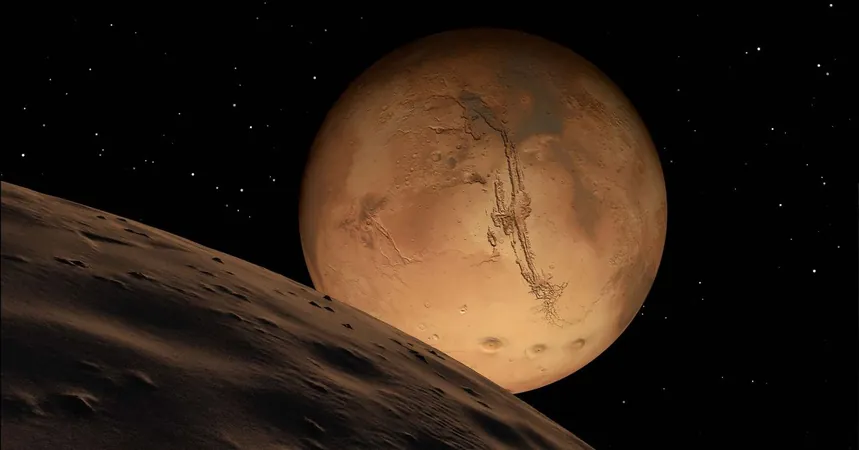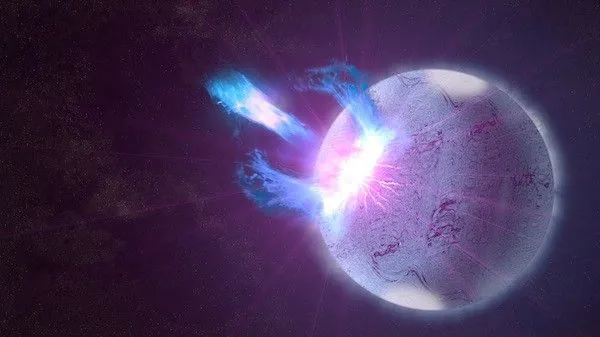
Astounding Plan to Transform Mars: Bombarding with Asteroids!
2025-04-16
Author: John Tan
Is Mars the Next Frontier for Humanity?
The more we explore our neighboring planets, the more they seem like inhospitable wastelands, especially Mars. Despite being the closest planet to Earth, it presents deadly conditions for any form of life.
NASA's Bold Mission and Musk’s Vision
With NASA gearing up to send astronauts to the Red Planet and Elon Musk ardently promoting the idea of a human settlement there, the dream of colonizing Mars is alive. While immediate plans focus on creating enclosed habitats for astronauts, visionary minds are looking further ahead.
Terraforming Mars: A Daring Strategy
Imagining a transformed Mars—a welcoming environment for humans—has sparked discussions about terraforming: altering the planet to resemble Earth. But experts agree, this monumental task is still decades away, yet crucial calculations are already in progress.
A Radical Proposal: Asteroid Bombardment!
Leszek Czechowski, a geophysics professor at the Polish Academy of Sciences, has a startling proposal: bombard Mars with asteroids! This radical strategy aims to turn Mars into a habitable landscape where humans can stroll without spacesuits.
Why Mars Needs a Makeover
Mars currently lacks the necessary atmosphere for life, remaining a barren desert with no liquid water. For instance, its atmospheric pressure is a mere 600 pascals—less than 1% of Earth's—meaning humans would face lethal conditions outside protective gear.
The Asteroid Solution Explained
Czechowski's vision involves launching an asteroid—loaded with essential elements—directly at Hellas Planitia, one of Mars' massive craters. This impact would ideally warm Mars while thickening its atmosphere, setting the stage for further changes.
Finding the Right Asteroid
Not just any asteroid will do; it must be rich in water and nitrogen. That's why Czechowski targets the Kuiper Belt—an icy reservoir of primordial materials—rather than the asteroid belt between Mars and Jupiter.
Navigating the Cosmic Journey
Future humans would need to journey to this distant region to select a prime candidate asteroid, outfitting it with propulsion to guide it toward Mars. This ambitious voyage could take anywhere from 29 to 63 years, to finally crash into the Martian suraface.
A Game-Changer for Human Life?
Czechowski's research underscores that creating a livable atmosphere on Mars is within reach by harnessing resources from space. However, the energy required to pull off such a mission is astronomical—potentially equivalent to years of Earth's total consumption.
The Future of Space Exploration!
Czechowski suggests that harnessing a thermonuclear reactor combined with an ion engine might be the most viable solution to power this expedition. As scientists gather at the annual Lunar and Planetary Science Conference, this bold proposal challenges us to rethink humanity's place in the cosmos.


 Brasil (PT)
Brasil (PT)
 Canada (EN)
Canada (EN)
 Chile (ES)
Chile (ES)
 Česko (CS)
Česko (CS)
 대한민국 (KO)
대한민국 (KO)
 España (ES)
España (ES)
 France (FR)
France (FR)
 Hong Kong (EN)
Hong Kong (EN)
 Italia (IT)
Italia (IT)
 日本 (JA)
日本 (JA)
 Magyarország (HU)
Magyarország (HU)
 Norge (NO)
Norge (NO)
 Polska (PL)
Polska (PL)
 Schweiz (DE)
Schweiz (DE)
 Singapore (EN)
Singapore (EN)
 Sverige (SV)
Sverige (SV)
 Suomi (FI)
Suomi (FI)
 Türkiye (TR)
Türkiye (TR)
 الإمارات العربية المتحدة (AR)
الإمارات العربية المتحدة (AR)